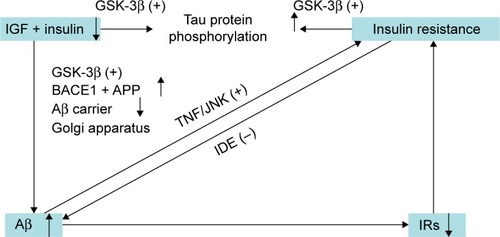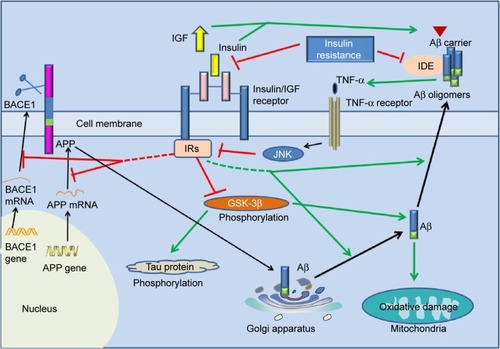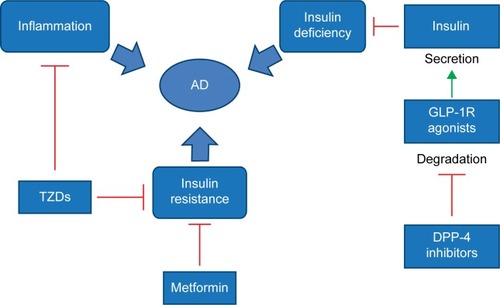Figures & data
Table 1 Summary of representative prospective epidemiological studies relating type 2 diabetes mellitus to Alzheimer’s disease
Figure 1 Overview of the role of insulin resistance and insulin deficiency in the pathology of Alzheimer’s disease.
Abbreviations: BACE1, β-site amyloidogenic cleavage of precursor protein-cleaving enzyme 1; GSK-3β, glycogen synthase kinase-3β; IDE, insulin-degrading enzyme; IRs, insulin receptor substrates; TNF, tumor necrosis factor; JNK, c-Jun N-terminal kinase; APP, amyloid precursor protein; Aβ, amyloid-β; IGF, insulin growth factor.

Figure 2 The underlying link between Alzheimer’s disease and type 2 diabetes mellitus.
Abbreviations: APP, amyloid precursor protein; Aβ, amyloid-β; IDE, insulin-degrading enzyme; BACE1, β-site amyloidogenic cleavage of precursor protein-cleaving enzyme 1; GSK-3β, glycogen synthase kinase-3β; IRs, insulin receptor substrates; TNF-α, tumor necrosis factor alpha; JNK, c-Jun N-terminal kinase; IGF-1, insulin-like growth factor 1.

Figure 3 Possible mechanisms of antidiabetic drugs in the treatment of AD.
Abbreviations: AD, Alzheimer’s disease; DPP-4, dipeptidyl peptidase-4; TZDs, thiazolidinediones; GLP-1R, glucagon-like peptide-1 receptor.

